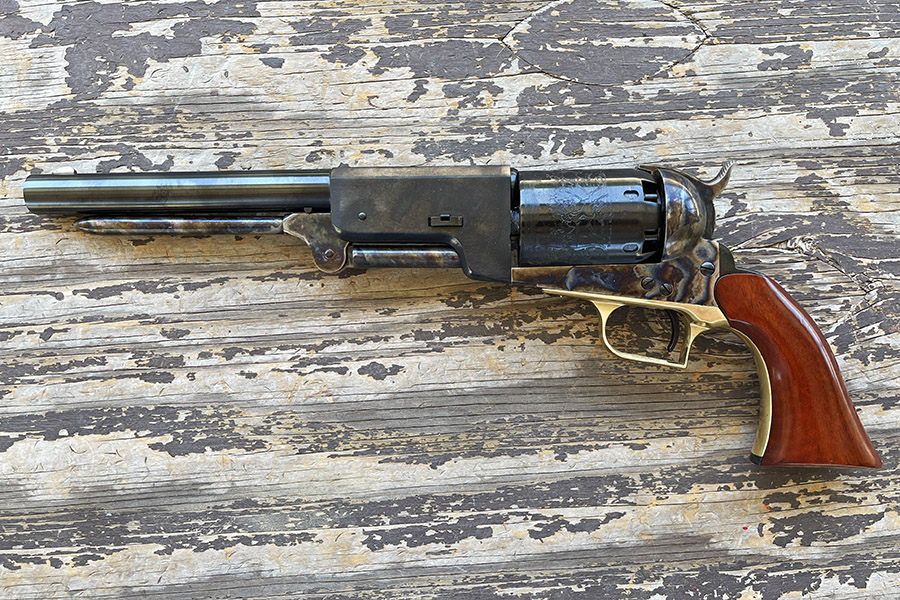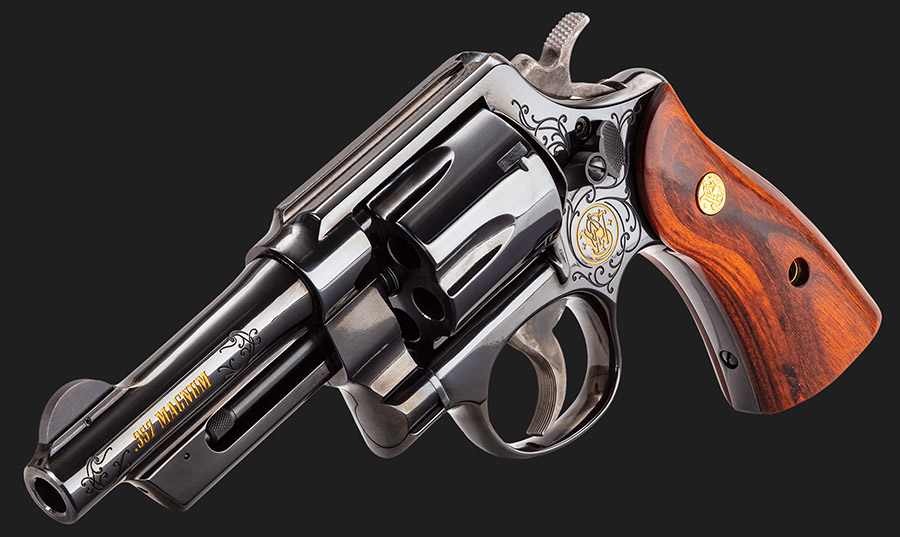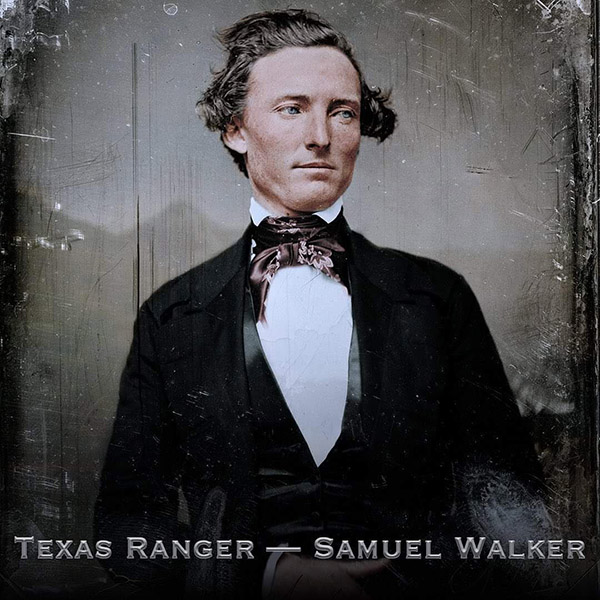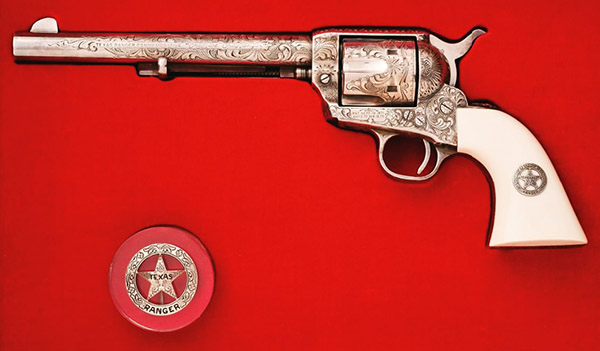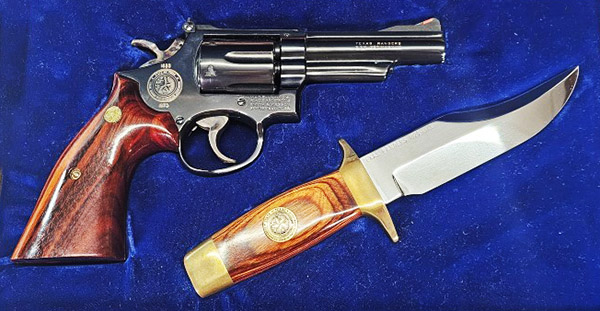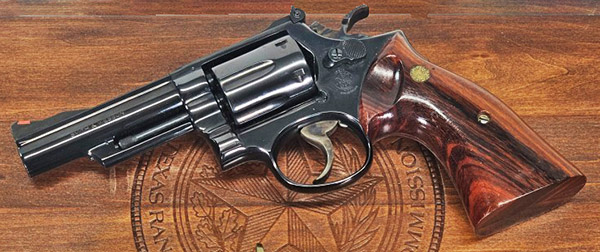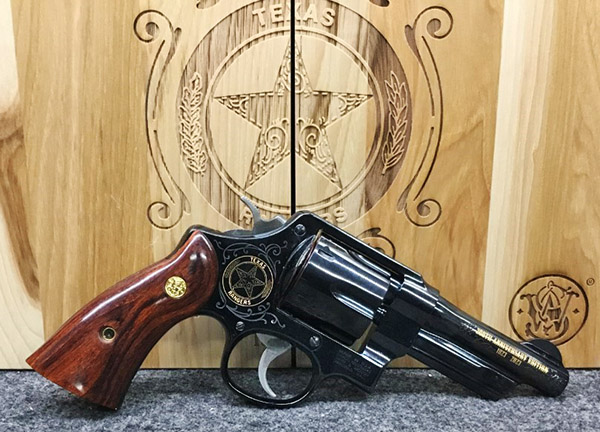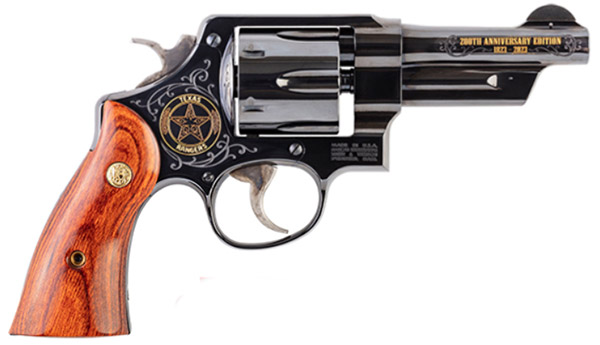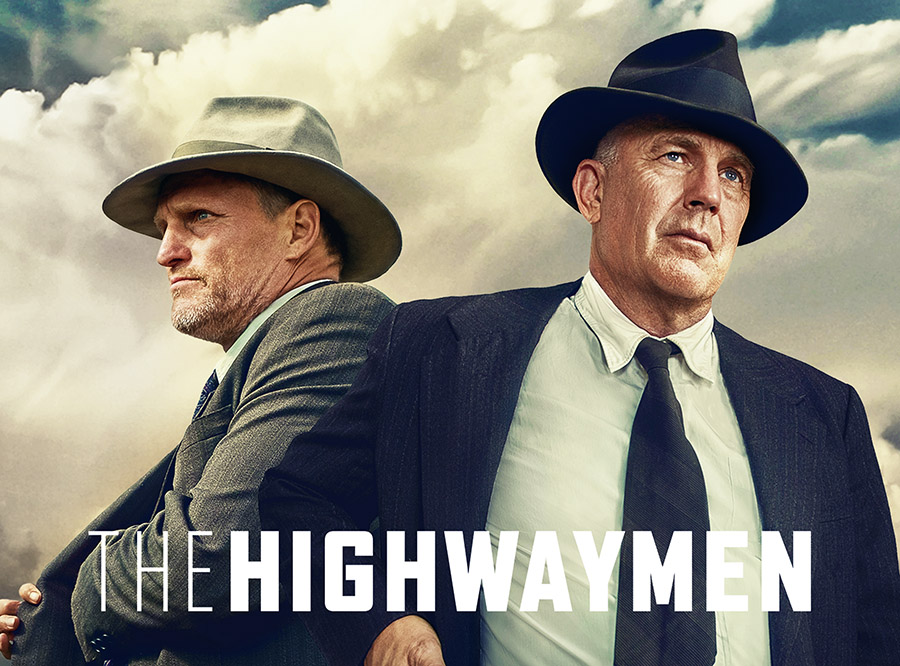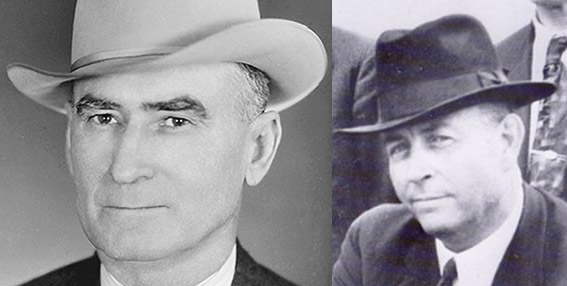By Joe Berk
I was downright giddy this past weekend, as I was about to do something I had never done before. When you’re my age and that happens, it’s something special. I was enjoying the feeling. I don’t get to experience new things too much anymore.
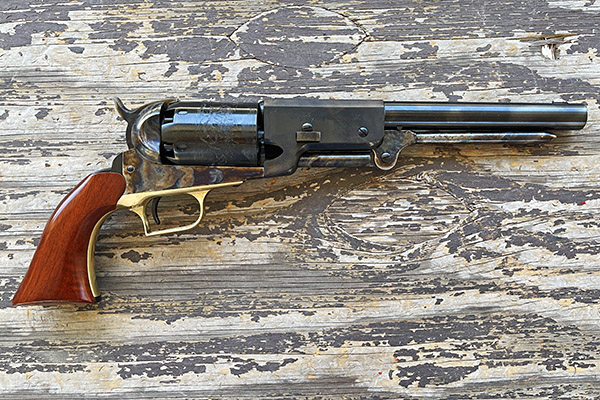
The something I was about to do? I was going to shoot my 1847 Colt Walker replica revolver, a gun that is a cap and ball, black powder six shooter manufactured by Uberti in Italy. It would be the first time I had ever fired a black powder revolver, and it would be the first time I ever went through the drill of loading it myself.
There’s a bit of a story behind the Colt Walker. It’s than just a story. it’s part of our history, and it goes back to near the beginnings of the United States. Samuel Colt had invented his revolver with the 1836 Paterson model, manufactured by Colt in Paterson, New Jersey (hence the name). It was a brilliant design, but it was probably ahead of its time in an era of single shot weapons. That’s what most people thought, but Texas Ranger Captain Samuel Walker wasn’t what anyone might regard as “most people.” Walker was a Texas Ranger, and he and his men actually used the Paterson revolver in combat along the Mexican border. Colt Firearms had already failed as a business, but the Paterson revolvers did their job. Captain Walker and his Texas Rangers prevailed against their enemy.
Captain Walker wrote to Samuel Colt. Colt Firearms had folded, but Walker explained to Colt how effective his Patersons had been and he offered to help Colt design an even better handgun. This meeting of the minds led directly to the 1847 Colt Walker. As I mentioned above, mine is a reproduction of the original. I paid $343 for it about 5 years ago. Original Colt Walkers bring more than million dollars when they trade hands today (only a few exist of the 1000 Colts produced for the US Army and 100 Sam Colt made for marketing purposes).
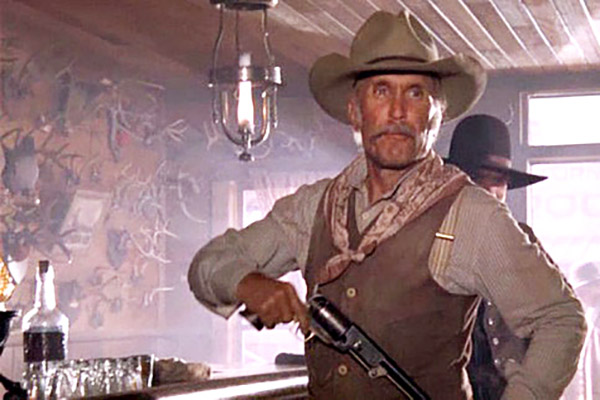
Modern firearms use cartridges that already have the primer, propellant, and bullet contained in the cartridge case. All we have to do is load the cartridge(s) and fire the gun. Cap and ball revolvers are different. Loading and firing them requires a series of steps far more complicated than firing a modern cartridge gun. Loading and firing a cap and ball revolver requires the following:
-
-
- Inserting a measured amount of black powder (gunpowder, so to speak) into each of the revolver’s chambers.
- Inserting a greased wad over the gunpowder.
- Lubricating the bullet (typically referred to as the “ball” because the bullet is a cast round ball).
- Positioning the ball over the chamber mouth.
- Rotating the cylinder to position the ball under the revolver’s ram.
- Using the ram to seat the ball in the chamber.
- Filling the space above the ball with “grease” (a mixture of lard and other things).
- Placing a percussion cap on each of the cylinder’s six nipples (the cap is the primer that ignites when the hammer hits it to initiate the gunpowder’s controlled rapid burn).
-
After doing all the above, I would then be able to fire six shots from my Walker.
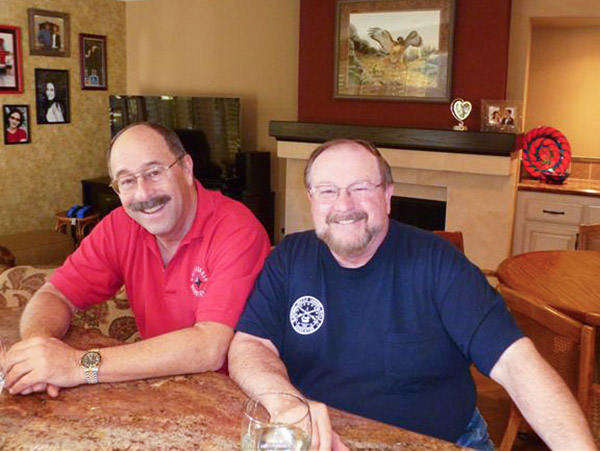
My lifelong friend and good buddy Paul has been shooting black powder firearms for most of his life. Me? I’m a newby. I’d never through the cap and ball loading sequence outlined above and I was plenty nervous about attempting to do so. Basically, I’d be playing with guns and explosives. I asked Paul about a thousand questions about how to do this, culminating in a visit to his rancho in northern California. Paul was informed and patient, and he had a bunch of good things to give to me when I arrived, including:
-
-
- Black powder.
- Caps.
- Balls.
- Grease.
- A loading stand.
- Loading tools.
-
I was blown away by Paul’s knowledge, generosity, and willingness to teach me how to go about loading and shooting a black powder revolver. I don’t mind telling you I was a little nervous, too.
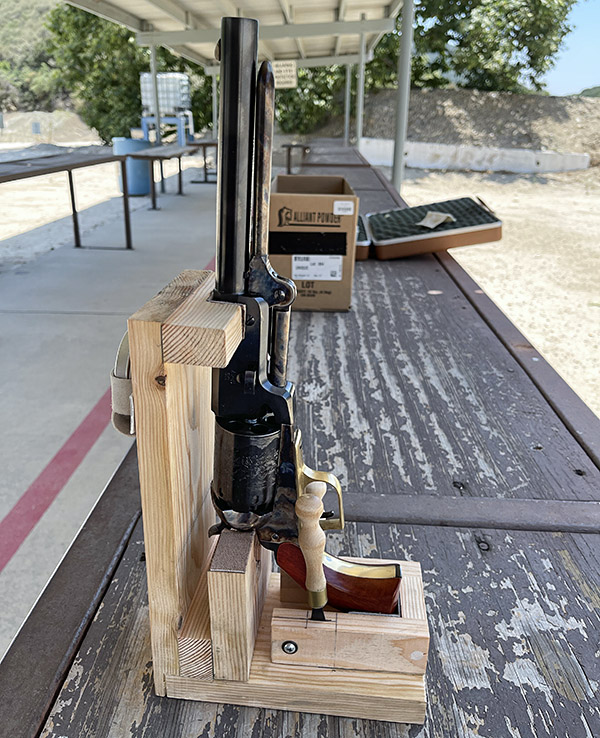
Paul told me that while you can load a black powder revolver without any tools, doing so is a lot easier if you have a stand. He had made a stand for me, and it fit the Walker perfectly.
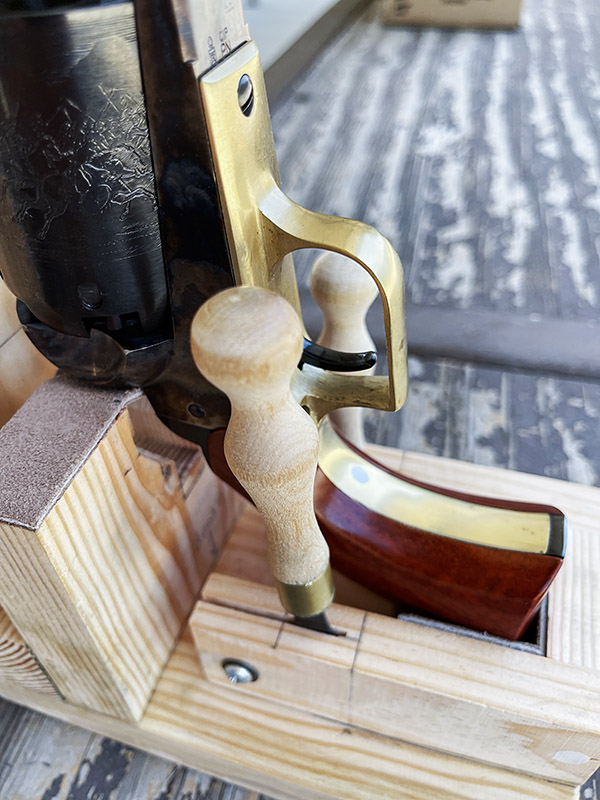
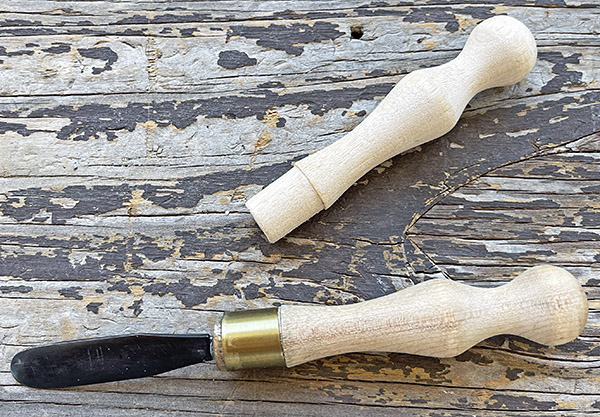
Paul also made up three tools to help the loading process. Two of these (the butterknife and the cap seating tool) were integrated into the loading stand. The butterknife is used to fill the cavity above the loaded chamber with grease. The cap seating tool is used to push the percussion caps onto the nipples.
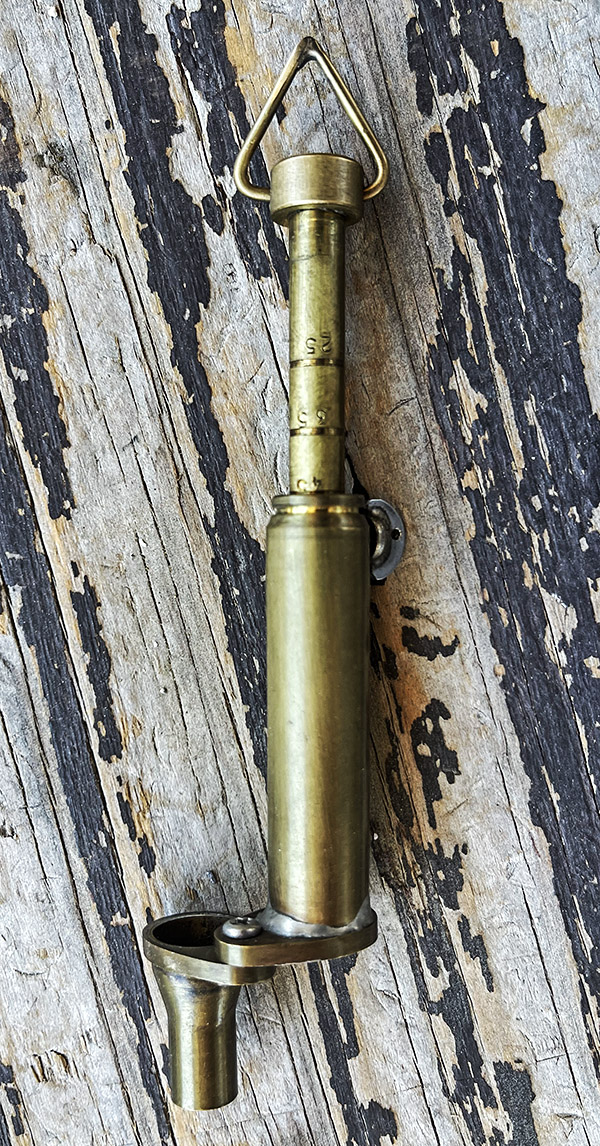
The third tool was the loading measure. Loading a black powder revolver involves inserting a measured amount of black powder into each chamber. Paul fabricated a precision measure from a .30 06 cartridge. It was quite clever, and it demonstrated Paul’s considerable design skills. I’ve known the guy literally all my life and he’s always surprising me with things like this.
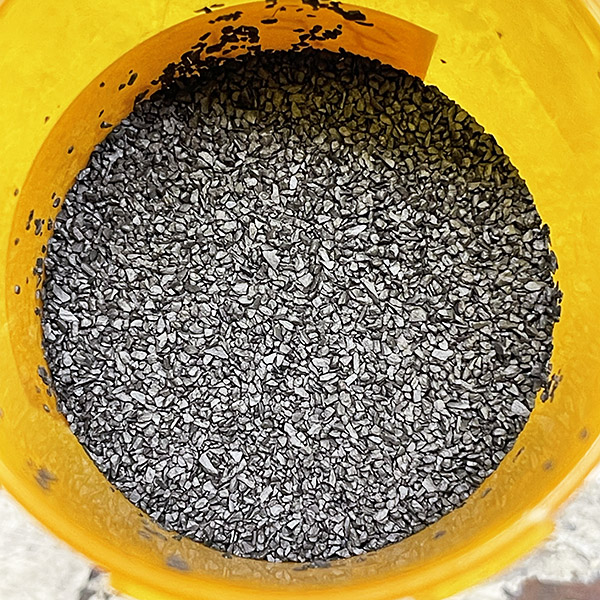
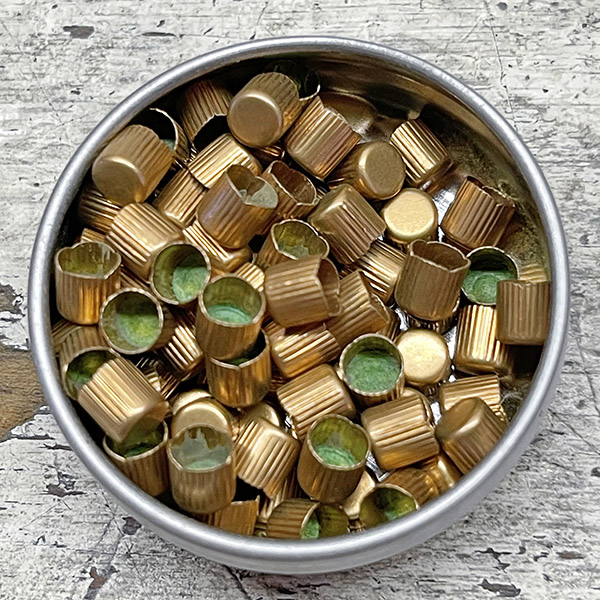

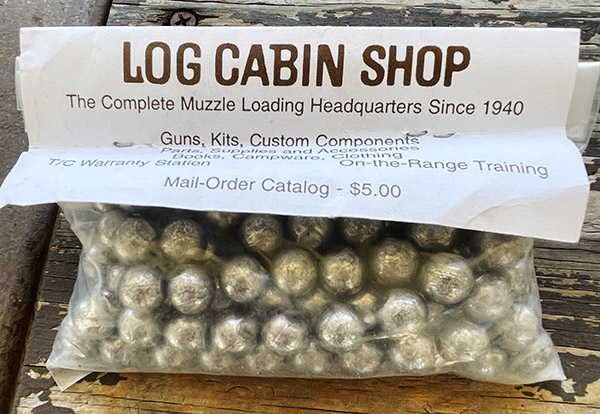
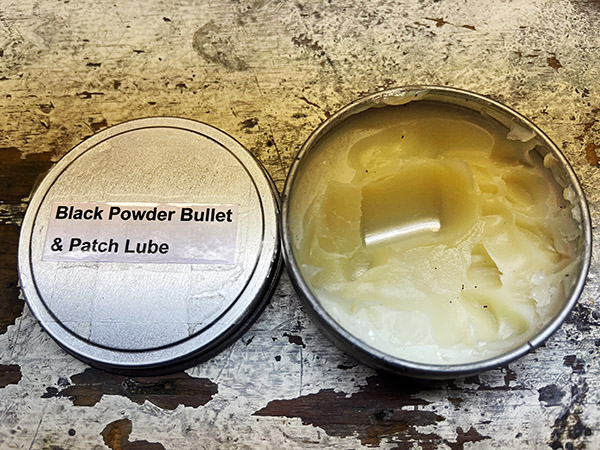
We had a very hot weekend and to further complicate things, the road to the gun club in the San Gabriel Mountains had been closed for the last several days (we were experiencing one of our many forest fires). On Sunday afternoon, though, the heavy smoke emanating from the forest fire (I could see it from my home) had lifted. I loaded the Subaru and headed for the range. When I arrived, other than the rangemasters I was the only guy out there. I had the range to myself. It was 97 degrees, but I could take my time, focus on everything Paul taught me, and make myself a black powder shooter.
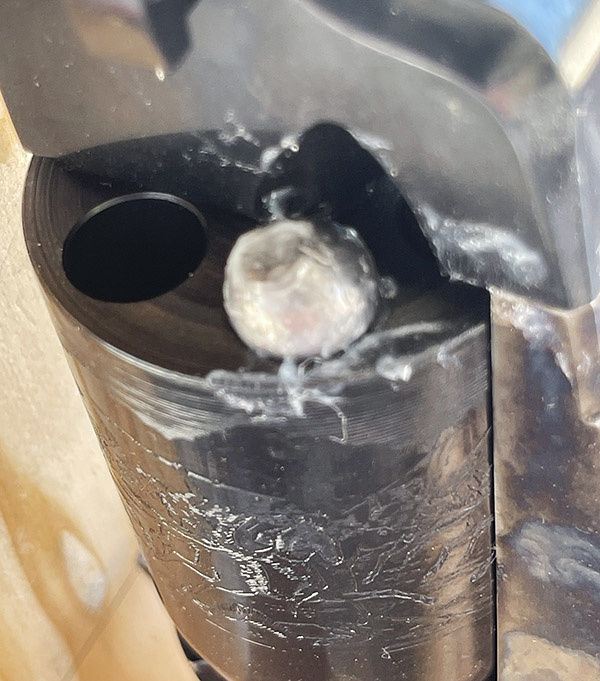
The revolver stand Paul made was awesome. It held the revolver perfectly and greatly facilitated the loading process. I set the powder measure at 40 grains (the Walker can go up to 60 grains), filled it, and poured the powder in the first chamber. That was followed by a pre-lubricated wad on top of the powder. I dipped one of the balls in the grease and seated it on top of the chamber I had just charged with powder and a wad. Then I rotated the cylinder a few degrees and forced the ball into the chamber with the revolver’s ram. Damn, that loading stand was a cool fixture. I couldn’t imagine trying to do this without it. I repeated the process five more times, and I had all six chambers charged.
After that, I buttered the tops of each chamber. The purpose of doing so is to prevent one chamber’s ignition from lighting off the other chambers (such an event is called a “chain fire”). That sometimes happened on the original Colt revolvers, it was viewed as a design flaw, and Colt’s early investors threatened to pull their funding when it first appeared. I don’t know if that’s what led to using grease on top of the seated ball. Whatever Colt did to allay their concerns, Colt’s investors hung in there with him.
The next step was to install the caps on top of the nipples. I was a little more nervous during this step. The percussion cap is what starts the ignition sequence. If one lit off during installation…well, let’s just say I probably wouldn’t be typing this story. But everything went as planned.
I was ready to go, but my hands were slippery. You know, they say you can tell how good a housepainter is by how much paint he gets on himself. By that measure, I was not a very good cap and ball revolver loader. I had grease on my hands and it made holding the heavy Walker difficult. I wiped off my hands as best I could, picked up the Walker, and drew down on the target 50 feet down range.
To say I was nervous would be an understatement. Here I was, greasy paws and all, holding this monster 5-pound revolver, trying to focus on a tiny and distant front sight while trying to keep it centered in the hammer notch that serves as the Walker’s rear sight. I felt like a little kid playing with Dad’s gun when he wasn’t home. Calm down, I thought to myself. Focus on the front sight. As I increased pressure on the trigger and tried to hold the Walker steady, I could feel Sergeant Major Emory Hickman, my Dad, and Paul watching me (even though I was the only guy out there on that very, very hot afternoon).
KA-BOOM!!!!
The big Walker barked, I saw the flash, the muzzle flipped up, I felt the recoil, and smoke filled the air. I realized again: This is a BIG gun. Hell, Walker and Colt designed it so that if you missed the bad guy, you’d kill the horse he rode in on (the literal embodiment of what you say in a verbal altercation). It was .44 Magnum of its day, the Dirty Harry handgun of 1847. Do you feel lucky, punk?
Damn right I did.
I looked downrange, and I could see the first hole I had cut through the target. It was high, but Paul told me these things all shoot way high. My bad guy was toast. Nailed him right in the neck, I did. I was in the scoring rings! Whoooowee, this was awesome!
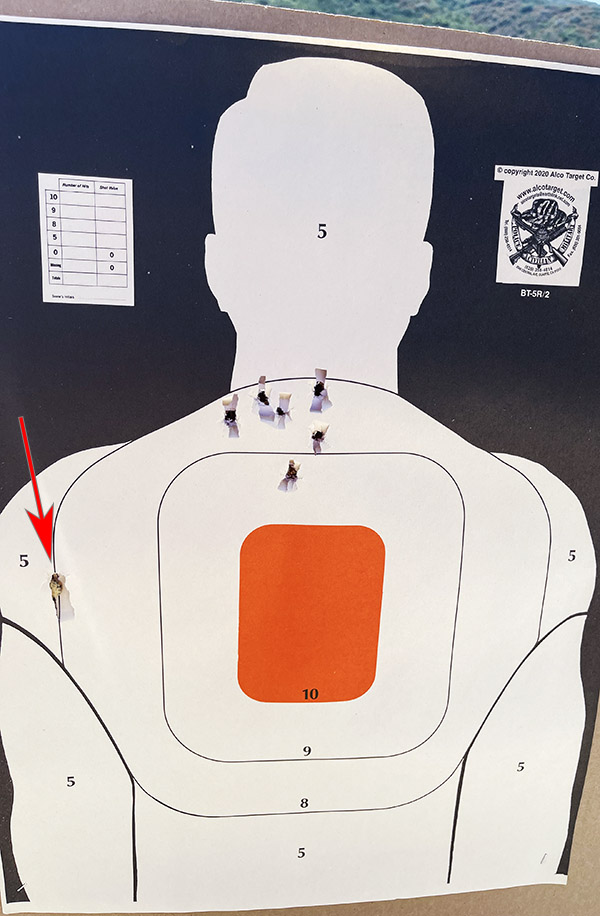
I fired five more rounds, gaining confidence with each shot. I became Captain Augustus McCrae. I wanted to throw a shot glass in the air and nail it in flight, right there in the saloon, just like Gus did in Lonesome Dove. I set the big Walker down on the bench and I called a line break (I was the only guy out there, but Captain McCrae wanted to do things right). As I approached the target, I saw a decent group for a guy with slippery hands shooting a cap and ball revolver for the first time on a blazingly hot afternoon. Then it was: Uh oh. I had put a shot off to the left in Mr. Bad Guy’s shoulder. I counted the holes in my nice-sized neck group, and there were six. Where did that seventh shot come from?
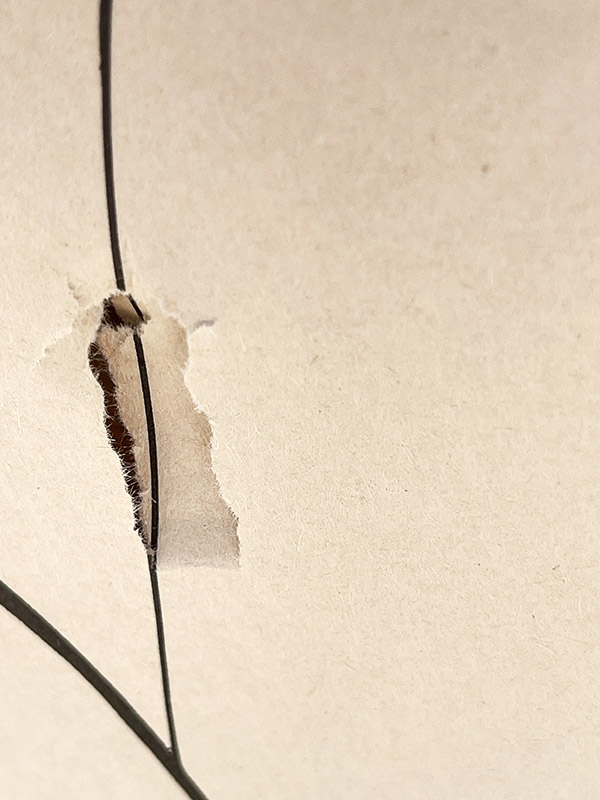
Ha! That hole in the shoulder was made by the wad from one of the shots! It was still stuck in the paper, and when I lifted my iPhone to get a picture, it fell behind the target.
I was hot, sweaty, greasy, and still giddy. Time for another six rounds. Paul told me when you shoot these things, you’re lucky to get through two full cylinders. The guns get so dirty they get difficult to cock and fire after the first cylinder. A big part of the problem, Paul said, are the cap remnants. They break up and fall into the mechanism. He was right.
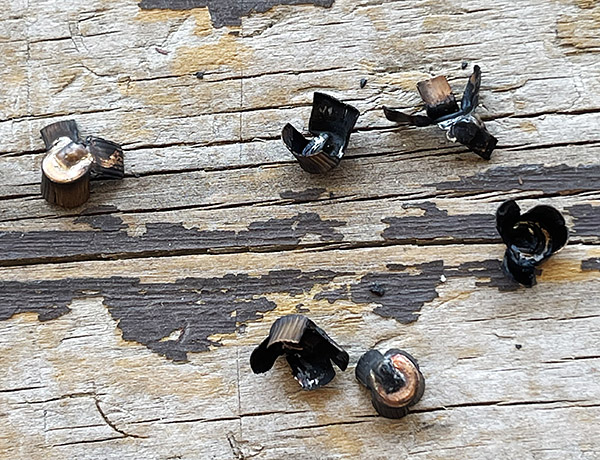
I got all the cap debris out of the Walker, loaded the gun again, and lit off six more. I’d already been on the range an hour and half. It’s like the amphibians say: Time’s fun when you’re having flies. A couple of shots from the next cylinder went a little high, but they were all in about the same area.
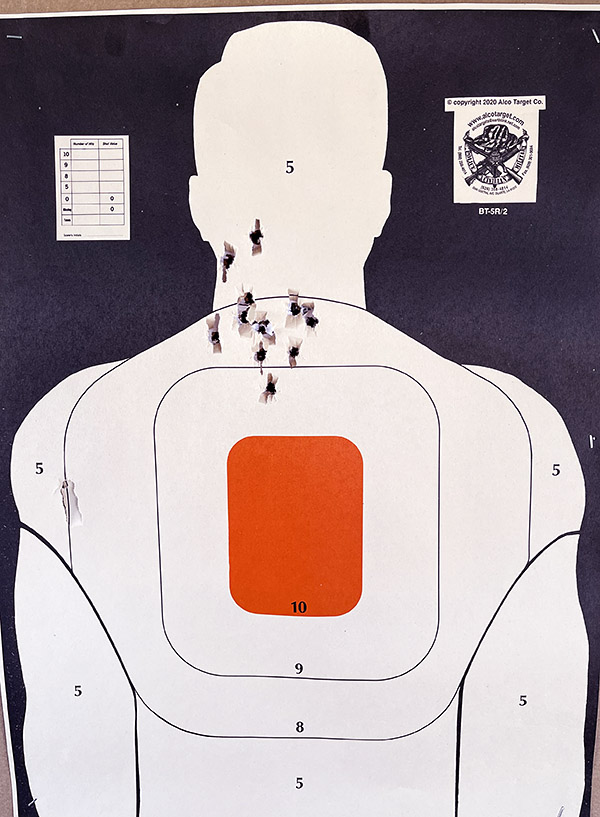
As I mentioned above, Paul told me all his cap and ball revolvers shot high, and that was what I found with mine. That said, I was enormously pleased with the results. The group was about the size of the orange bullseye. My aim point had been the center of the bullseye. If I held low and to the right, I’m confident I could put six rounds in the orange bullseye. Move over, Gus!
You know, on the way home, I was thinking about what our early Americans had to contend with when armed with cap and ball revolvers. It’s astonishing to think about winning gunfights, battles, and wars with weapons that are so heavy and take so long to load. My admiration for what they accomplished had been high; it was now even higher.
That ride home was quite a ride. I was going to call Paul to tell him about my success with the Walker and thank him again, but the radio was carrying President Trump’s speech live from Pennsylvania. He was only minutes into it and I was only half listening when I heard things crashing and then I heard several pops. And then a blood curdling scream. What I was hearing didn’t compute at first, and then I realized: Someone was shooting and I was hearing it live.
I arrived home a few minutes later and turned on the TV. What I saw hit me hard. The President escaped death by millimeters, and that only occurred because he happened to turn his head at precisely the right instant. I feel terrible for the retired firefighter who died and the others who were injured. It was a massive failure on all but the final Secret Service action (when they killed the sniper who fired the shots). I’m sure we’ll be hearing much more about this as the weeks and months go by. The Secret Service is a troubled agency. If it’s not botched protection efforts it’s cocaine in the White House or hookers in Colombia. It’s almost as if they need to shut that agency down and start over. I hope they get it right soon. I would have written and posted this blog sooner, but like most Americans, I’ve been glued to the television as updated info on the assassination attempt rolled in.
So to get back to this blog, I am very pleased with my Walker’s performance, and I am more than a little pleased with my performance, too. I’m hooked on the cap and ball revolver experience. For most of us in most of the United States, we can still purchase black powder guns through the mail and have them delivered to our home. Just this morning I received a cap and ball revolver sale notification from Midsouth Shooting Supplies. Don’t overlook these windows into our past. Take it from me: They are fun.
Never miss an ExNotes blog:

